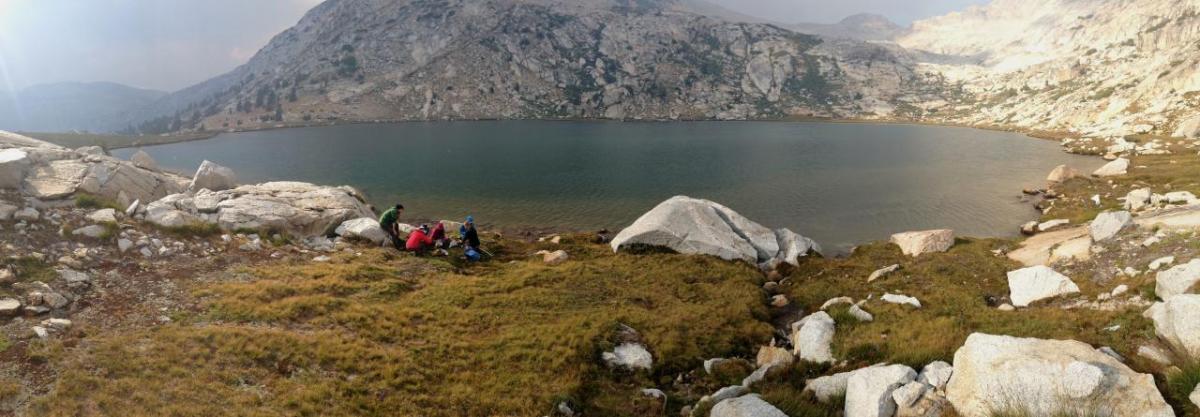Climate Finance Tracker: Mapping the Climate Finance Ecosystem
By Peter Tavernise

This blog was prepared with deep thanks to Cisco employee volunteer Haitham Al-Shabibi.
Climate change is an issue we can’t solve alone, yet it seems like very few of those working to solve it have a big picture view of who is already working on what or where their work fits into the broader solutions landscape. Without a collaborative approach, effectiveness of private philanthropic and impact investment capital is severely limited. Climate funders need transparency, effective tools, and a holistic view of the landscape in order to make better decisions to set high-impact priorities.
The Climate Finance Tracker (CFT) is a suite of visual interfaces engineered by Vibrant Data Labs (VDL), an organization housed in Berkeley, California, that combines data and network theory into flexible tools, to tackle systemic social challenges like climate change. The CFT visualizes climate funding flows to organizations and companies on the ground. What started as a simple United States finance tracker is now poised to scale into Europe, Africa, and Latin America.
In 2021, VDL became a recipient of a grant via Cisco Foundation’s Climate Impact & Regeneration commitment to build out an initial prototype of the CFT. Since launching the CFT fall of 2022 in partnership with One Earth & Impact Alpha, they have been overwhelmed by the positive response. It has led to active collaborations with Climate Policy Initiative, ClimateWorks Foundation, Elemental Excelerator, Forbes, Global Commons Alliance, Summit Impact, and TED.
The partnership between Vibrant Data Labs and Cisco Foundation is built on the shared belief that by building capacity, improving transparency, and supporting funders and decision makers, efforts addressing the climate crisis can be much more effective.
We recently caught up with Eric Berlow, founder of Vibrant Data Labs and co-creator of the CFT, who was awarded an Emerson Collective Climate Fellowship. He shared more about his background, philosophy, and goals.
Can you tell us a bit more about your background?
Eric: Yes, so I have a PhD in marine ecology and in particular I work to understand nature as a complex system. You can’t do that kind of work in nature without being able to deal with noisy data and statistics, so as a result I had to develop a strong background in data science and network theory.
I worked in Yosemite National Park for five years for the University of California running a research institute, trying to bridge science, policy, and natural resource management for evidence-based decision making. We had a big, collaborative project synthesizing satellite and on-the-ground data to predict where threatened amphibian species were breeding. The data helped prioritize where limited park resources should be allocated to protect the species.
How does your background in ecology help inform the CFT?
Eric: Well, that is exactly how the CFT works — we use data to see the big picture and to help prioritize where funding efforts should go, given that resources are limited.
Another way to think about it is: If you map out who eats who in an ecosystem, you have complex flows of energy that comprise an entire food web. Turns out, those network structures are not random. They’re really critical for how those systems persist, and why they don’t crash. Instead of analyzing who eats whom, we’re using the same statistics to analyze who funds whom. Now, we have a funding ecosystem.
My passion over the past decade has been thinking about how ecological theory can inform solutions to complex problems, like climate. It requires a big picture of understanding multiple causality. There is no one silver bullet, there’s no one moon shot.
If you could sum up what the CFT is trying to solve, what would it be?
Eric: The public CFT is a visual Rolodex. It’s about overcoming myopia, which I think is the root cause of so many of those complex problems. But the main goal is to promote discovery and foster collaboration so people can see who’s doing what, avoid duplication, and fill in gaps where funding is missing.
We are also hoping to help people see that the success of an investment is dependent on other investments, too. Let’s say you have great investments with electric vehicles (EVs), but not with chargers or grid upgrades, that investment could fail. It will be critical to fill those gaps.
At the end of the day, we want to make it easy for someone to poke around and paint a picture of where money is flowing in different climate spaces.
You mentioned “silver bullets” and “funding gaps,” can you explain this a bit further?
Eric: Imagine you are in a community that is trying to grow a tree. You know it needs sun, water, nitrogen and phosphorous to grow. If any one of these is missing, it dies. If everybody just gives it water, it dies. Everyone needs to know what that tree is getting, and what is missing. The most important thing to contribute is always whatever is missing.
Here in the US, we have a “silver bullet” mentality, where one thing will solve it. This idea of, ‘Just give the tree water, and it lives’, which isn’t the case. Let’s take the renewable energy and mobility transition. You could have great investments in renewable power generation like solar and electric vehicles. But if you don’t have upgrades in distribution through our aging grid, it doesn’t matter. If you don’t have your charging infrastructure, it won’t work, and those other investments fail.
It wasn’t until pulling together data on who is funding what and where that I realized what a huge opportunity for impact is this issue of filling gaps. If one thing is missing, we fail. If we want to have an impact, we need to find where funding is lacking. And the only way to find those gaps is to see where the money is flowing.
To identify those gaps, you’d have to have tags and categories in the first place, correct? How does that work?
Eric: We currently start with philanthropy and investment data from Candid and Crunchbase (with more on the way!). We then gather, from online sources, more data on how the grantees and investees describe their work. This allows us then — using various methods, including natural language processing and machine learning — to categorize the organizations and let them self-organize into themes — all based around who is working on similar things.
A key challenge has been to develop a method for searching for ‘climate relevant’ investments and grants. To do that we start with broad topic searches — for things like ‘climate’ and ‘agriculture,’ but then we need to filter these results because not all agricultural solutions are climate-positive, or some may mention ‘climate’ but in the wrong context. To do that we manually review a random subset of the results and use that to ‘fine-tune’ a Large Language Model to identify in the remaining results which are actually relevant to climate — for example, companies that are addressing things like regeneration, soil health, and sustainable water usage.
Can you give an example of a helpful action that can be done with CFT data?
Eric: Yes! Let’s stick with food systems and agriculture. If you’re new to the space, the CFT allows you to see who is funding regenerative agriculture. More so, you can use those tags to see who, and what, is being funded. This is how we improve transparency and increase efficiency. If you’re looking for funding — or if you are a funder who is new to a topic — you can quickly see who you should be talking to!
We can also go deeper to see where organizations mention language related to social equity and justice. For example, who states an intent to address energy poverty in low-income and rural communities. We can see financial flows into community-based conservation, restoration of land and community resiliency, equitable resourcing for the clean energy transition, and the intersection of climate solutions with general livelihood improvement.
We can help optimize funding and investments so resources can better flow to high-quality organizations, initiatives, or companies that are traditionally overlooked or underserved by the existing financial system.
Really it just comes down to the fact that engaging communities in the solution is actually the solution. It’s not just a moral thing to do, to improve the livelihoods of vulnerable communities, but it’s how you can truly scale and build out markets. For example, if you support energy independence for everyone, it creates more demand for electric mobility, which creates more demand for charging infrastructure, and so on.
What parting thoughts would you say to people who are interested in the CFT?
Eric: Part of our goal with the CFT was to show that climate solutions are not just solar panels and electric cars, those are just tiny corners of the landscape. If we can move beyond that silver bullet mentality, we can see that there are so many ways to contribute: you don’t need to become an electrical engineer.
We want to change the conversation, bring a positive tone that brings everyone along. There are so many things we can do to help more people. Of course, we’ll have to make sacrifices, but how cool is it that we get to build a whole new world? We get to make a renewable and regenerative transition. And we have to do it together.
It doesn’t matter how well-funded one company is, it will never solve every climate problem.
It doesn’t matter how rich one donor is, they will never solve it alone.
It doesn’t matter how big an investment fund is, it never will work alone.
We need to empower everyone to be part of the solution.
With thanks to Eric Berlow and Vibrant Data Labs for sharing their story with us, we invite you to learn more about the Climate Finance Tracker here!
View original content here

